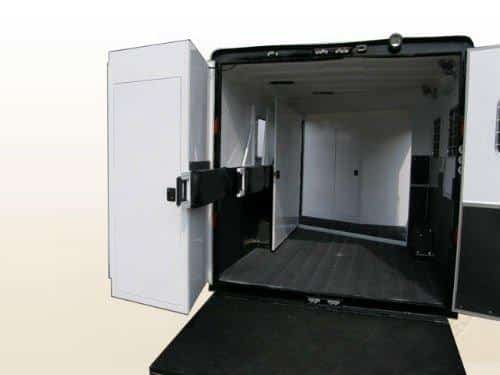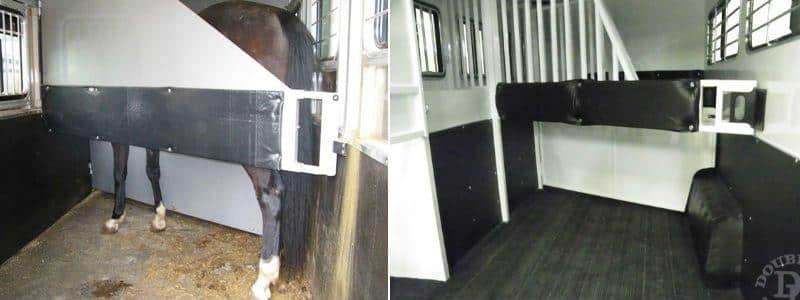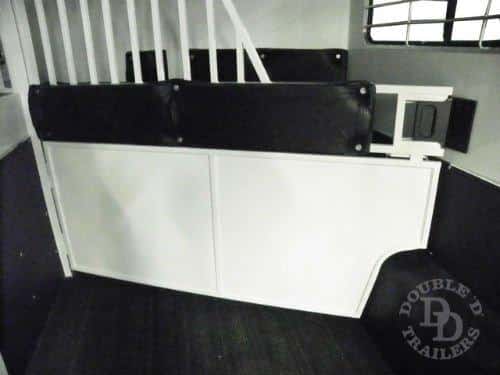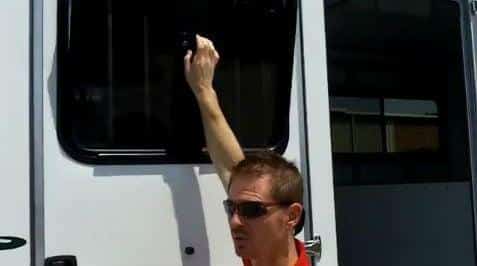The 13 Worst Horse Trailer Flaws in History
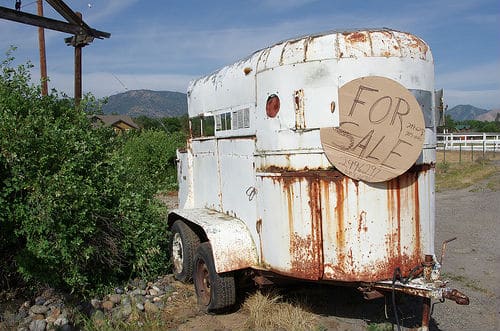 Purchasing a horse trailer, not to mention having to choose among competing horse trailer brands, requires a lot of considerations: prices, capacity, weights, and brands. But did you know that not all horse trailers are created equal? Double D Trailers have seen – or experienced – a certain number of flaws that are prevalent in the industry. You don’t need to experience these flaws yourself - Brad Heath, owner of Double D Trailers, was on hand to help suggest the top 13 features to avoid when shopping for a new horse trailer.
Purchasing a horse trailer, not to mention having to choose among competing horse trailer brands, requires a lot of considerations: prices, capacity, weights, and brands. But did you know that not all horse trailers are created equal? Double D Trailers have seen – or experienced – a certain number of flaws that are prevalent in the industry. You don’t need to experience these flaws yourself - Brad Heath, owner of Double D Trailers, was on hand to help suggest the top 13 features to avoid when shopping for a new horse trailer.
We’re sure that once you’ve read the list, you’ll avoid horse trailer brands that do not prioritize horse and human safety in their designs. Brad Heath says, “Designs at Double D Trailers are based on research and testing, with the goal of building the safest horse trailer brand on the road, regardless of the cost.” Safety for your horse is our priority, and we're committed to educating owners on how to choose the right trailer materials. Then you’ll be so much better informed when selecting the model and brand. “Some of these 13 flaws are simply inconvenient, but many of them are downright dangerous”, he added.
You’ll be so much better informed when selecting the model and brand.
13 Worst Horse Trailer Brand Design Flaws to Avoid: A Quick Checklist
-
Inadequate aluminum walls offering little to no structural protection.
-
Meager aluminum floors not designed to withstand years of horse urine.
-
Thin mill-finish aluminum roof material offering little to no structural protection.
-
Weak aluminum dividers with low structural resistance.
-
Poorly configured and potentially dangerous rear tack areas.
-
Poorly designed butt and chest bars leading to unexpected critical incidents with horses.
-
Loose bolts causing rattling noises due to insufficient stabilizing fixations.
-
Solid head dividers restricting vision and air flow.
-
Small windows reduce air flow and light.
-
Insufficient interior padding to prevent injuries.
-
Flimsy rubber wall linings that can be easily stripped off.
-
High door sill promoting tripping.
-
Difficult to reach window latching mechanisms.
Just What is a Horse Trailer Flaw Anyway?
A flaw refers to an inherent defect in a product. It is potentially dangerous - or harmful - in the way it was designed or built.
Most horse trailer flaws can be traced back to three root causes:
-
Inappropriate building materials
-
Inappropriate construction methods, or
-
Poor (or absent) design when thinking about the end user.
As you read through our list of flaws found in many horse trailer brands on the market today, ask yourself – is it the wrong choice of materials, inappropriate construction methods, poor design, or a combination of all three?
What Brand of Horse Trailers Are All Aluminum?
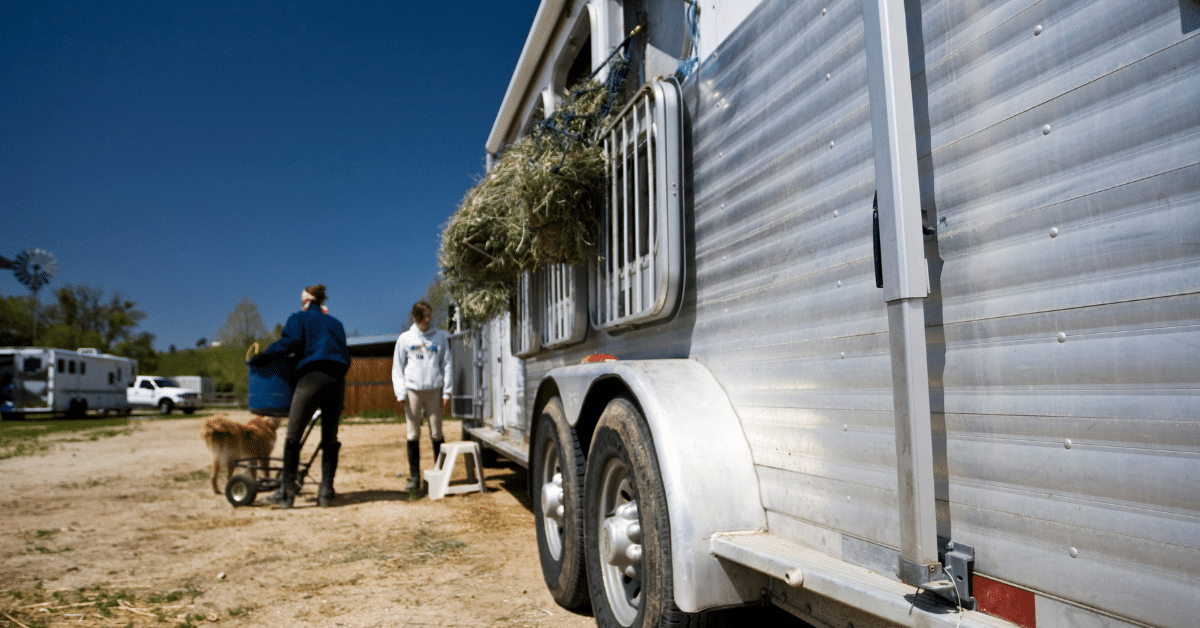 First, you’re going to notice something when searching for your new horse trailer – over half (and possibly up to 95%) of all horse trailer brands on the market today are built using aluminum as their primary construction material. Manufacturers will tell you that aluminum won’t rust and “weighs the least, costs the most, and lasts the longest.” The question is, is an all-aluminum horse trailer the best option?
First, you’re going to notice something when searching for your new horse trailer – over half (and possibly up to 95%) of all horse trailer brands on the market today are built using aluminum as their primary construction material. Manufacturers will tell you that aluminum won’t rust and “weighs the least, costs the most, and lasts the longest.” The question is, is an all-aluminum horse trailer the best option?
Let’s take a detailed look at where the use of aluminum in horse trailers comes from, and why so many horse trailer brands use it to build their horse trailers, because our first four flaws concern the use of aluminum.
Back when the first commercially available horse trailers became available, there was little variety in construction materials, and very little research on safety.
In those days, most - if not all – horse trailers were made from steel, a material that rusted easily and didn’t last long. These first horse trailers were a welded combination of angled iron, bare sheet metal, and processed steel that were in most cases, already rusted. Manufacturers welded the different pieces of metal together, then primed and painted the trailer. Then, they sent it off to be sold. However, the poor choice of metal and the weakly-welded joints quickly oxidized, and soon, the brand-new trailer was covered in red rust.
In the late seventies and early eighties, horse trailer manufacturers began searching for alternate materials to replace the problematic steel. Manufacturers needed a new material, and once they found it – in the form of aluminum - it didn't take much to convince consumers to switch to something they perceived to be better. However, the high cost of aluminum was worrisome to the manufacturers. This negative aspect eventually worked in their favor - the market was ready to spend more for a supposedly better product, and the high cost gave consumers the impression that it was a superior trailer. What most consumers basically did know about aluminum was that it didn't rust - and that seemed to be more than enough. It costs a lot more, therefore, it must be better, right? They didn’t know that the extra expense was directly attributed to the higher cost of aluminum, not necessarily because it was a better product.
Maybe it’s time to have another look at the use of aluminum in horse trailers brands. Read on to see why it may be at the root of several (four in our list of thirteen alone) of the most common design flaws we have seen. Brad says, “Aluminum is just not cut out for high stress situations, and it just can’t take the same abuse as steel.”
1. Walls so Thin, Horses Can Kick Right Through Them!
Aluminum is a brittle material and will shear and tear when stressed beyond its capacity. It has excellent corrosion resistance and can be easily cast, machined, and formed, but it is very easy to bend and dent.
The biggest weakness of aluminum, when used as a horse trailer structure, is that it can be punctured by a horse’s strong kick. “Single-walled trailers with an aluminum skin can be dangerous if a horse rears up and punches a leg through,” Brad explained.
In the interior of the pictured horse trailer, the tubing frame is exposed and noticed the thin sheet metal panels. If a horse rears up, they can poke a leg through. Although double walled aluminum trailers are better, you still only have a .040 tin can piece of thin sheet metal which a horse can easily dent or push through.
For a stronger option, look for double layered walls that are insulated and use a much stronger material, such as galvaneel steel and insulation.
We suggest you search for a material like our 16-gauge Galvalite. This wall system is superior to aluminum and will hold up much better in an accident, or if a horse kicks out.
See our detailed comparison between aluminum and galvalite material in this video.
Make sure that the walls of your trailer are strong enough to withstand a kicking horse or an accident. Photo credit: For Sale On Hwy 168 -IMGP1534rs via photopin (license)
2. Aluminum Strikes Again in the Flooring!
All-aluminum trailers will undoubtedly have an aluminum floor.
Aluminum flooring transfers excess heat, noise, and vibration from the road directly into your horses’ legs. This can cause extra fatigue after a long trip, which certainly won’t help if you’re headed to an important competition.
Additional vibration and noise can also be a result of a lack of proper insulation. Vibrations and constant noise can make your horse nervous and uncomfortable.
It’s also important to note that all metal floors are prone to corrosion (in the case of steel) or oxidation (in the case of aluminum). Since horse urine is very acidic, it can add to the wear-and-tear, and slowly weaken the floor. To prevent holes, it’s important to keep the flooring clean and dry. As aluminum is so malleable, it is susceptible to dents, which creates pockets in which the urine may settle.
Horses involved in horse trailer accidents connected to worn-out flooring are unfortunately, usually fatally injured, and must be euthanized immediately. That’s what makes metal floors so dangerous. And even when those floors are covered with synthetic coatings, there is still a danger of corrosion and accidents.
We suggest you look for alternative flooring types that offer multiple advantages - minimal heat and vibration transfer, and robustness. Wood flooring with a mat, or recycled rumber material without a mat, are both good options. Rumber offers the least amount of heat, noise, and vibration of all the flooring types. With rumber, you won’t need any heavy rubber mats – they can be difficult to drag in and out of your trailer. Rumber is a bit more expensive and has a 10-year warranty, while many trailers with wood floors come with a lifetime warranty. Both are both good options.
Whether you use wood, aluminum, or any other material for that matter, check it on a regular basis. Look for cracks or signs of stress, such as warping or dents, and a spotty or uneven milky appearance on aluminum floors, and if it is a wooden floor, check for signs of rotting.
Do NOT take chances on flooring.
It is important to consider the type of flooring for your horse trailer. Aluminum flooring transfers excessive heat and vibration into your horse’s legs causing fatigue. Photo credit: Horse standing in trailer via photopin (license)
3. Mill Finish Aluminum Roofs = Bad, Bad, Bad!
Not surprisingly, many horse trailer manufacturers use ‘mill finish’ aluminum to cover their trailer’s roof. Brad said, “It’s the worst design and poorest choice of material on planet Earth to cover a horse trailer with it!”
We suggest you look closely at the type of roof on your prospective trailer to assess the roofing system. There are three main reasons for looking for a more than a thin piece of aluminum: reducing heat transfer, absorbing impacts, and reducing leaks.
Heat Transfer
Aluminum is a great conductor of heat, so as the trailer roof heats up on hot summer days, the heat passes into the horse trailer. Temperatures can reach up to 158 degrees Fahrenheit. Such extreme heat is dangerous for your horse – leading to extreme sweating, dehydration, and other health problems.
A mill-finish aluminum roof (top) is dangerous for horses because it easily transfers heat into the interior of your trailer. The SafeBump roofing system (bottom) from Double D Trailers is a much better option. It is painted white and made of a single molded piece of fiber composite material that is designed for strength and temperature control.
We suggest that you look for an insulated roof. A roof with two sheets of aluminum separated by a layer of insulation will help cut down on the heat transfer from the hot sun above. Also, look for a trailer roof that is painted white to reflect heat - white reflects more heat than any other color.
Absorb Impacts
Look for materials to absorb the impact of a rearing horse’s head to reduce the risk of injury if your horse has the tendency to do this. An insulated, smooth, one-piece roof will help absorb the impact and prevent the horse’s head from protruding straight through, as well as avoid cuts and scrapes if it does come into contact.
Reduce Leaks
Look for a design that eliminates bolts, rivets, screws and fasteners, and sealant or caulking. This just reduces the number of things that can go wrong, especially after years of use.
The SafeBump roof system from Double D Trailers is a great option because it is made of one piece of fiber-composite material. It will not leak, is insulated with fibreglass insulation offering the best R-value, and is flexible in case your horse rears up and bumps his head. Its design eliminates bolts, rivets, screws and fasteners and sealant or caulking. Since the roof is constructed in a one-piece mold, there aren't any seams to worry about leaking, ever.
 4. Aluminum Dividers are Weak at Welding Points
4. Aluminum Dividers are Weak at Welding Points
In our opinion, aluminum is also a poor choice of material to use for the interior dividers of your horse trailer. This weak metal tends to break at the welded points during accidents.
Overall, steel - or another more robust steel variation - is a much safer option than aluminum. Yes, the downside of steel is that it tends to rust. Look for newer alloy options that combine steel with other metals allowing the use of smaller gauge metals. The material should offer superior strength yet weigh about the same as aluminum.
Also, look for stall divider construction that allows for a one-hand operation of opening and closing the dividers if possible
Instead, choose Z-Frame Technology dividers from Double D Trailers, which combine strength with long-lasting durability.
5. Poorly Configured Rear Tack Areas Create “Extreme Danger for the Horse and Horse Owner.”
It was a normal day in Raleigh, North Carolina in 1999, when a Double D Trailers customer loaded her three horses onto a slant load trailer with slatted sides. The trailer had a conventional style rear tack and there wasn’t enough room for the handler to safely walk in with the third horse (due to the rear saddle compartment being in the way). Her horse was a great loader, so no problem right? After loading, she reached through the open slatted side to secure the halter on her last horse, when he reared back unexpectedly, in sudden panic. The move snagged her hand and ‘snapped’ her arm. She was quickly on her way to the emergency room.
As they say, necessity is the mother of invention. When Double D Trailers heard of this incident, we quickly reacted and began looking for a better option.
Most slant load horse trailers have only one narrow door in the rear of the trailer through which to load your horses. The other half of the rear entry is taken up by a built-in rear tack area. First off, this narrow opening can be daunting for nervous horses. They see the trailer as a scary metal cave with a narrow mouth. What horse wants to walk into that!?
Second, while this rear tack storage can be quite handy, it can also be a huge safety hazard. After loading your final horse, the handler has very little room to maneuver inside the trailer. They are trapped between the horse and the wall of the rear tack area with no way to escape in an emergency. In the story above, the woman tried to secure her horse’s halter by reaching through the slatted sides, but this had disastrous results.
We suggest you look for a horse trailer design that allows the entire back of the trailer to open. Two doors that open wide ensure maximum safety.
Double D Trailers’ SafeTack system was designed in response to this woman’s story. The tack area in a SafeTack trailer swings out like a second door. This allows your horse to load through a wider and much-less-scary opening.
Read more: Why The SafeTack Trailer Design is the Safest Trailer for Loading Horses
Even more importantly, Double D Trailers include an extra divider after the final horse. Once this is secure, the handler can safely walk up beside their horse to secure their halter with virtually no danger of being crushed. Once your horse is settled, you can swing the entire SafeTack compartment closed, and then close the second door for travel.
The SafeTack rear storage area swings out like a second door to eliminate the narrow loading area and dangerous squeeze common in other slant load trailers.
6. Some Butt and Chest Bars Can Trap Your Horse
Butt and chest bars are supposed to keep your horse in the correct area of the trailer, but they can sometimes cause more harm than good. A panicked horse can easily trap a leg over a bar with no way to escape. Once their weight is on the bar, it becomes nearly impossible to release without causing further injury to the horse.
We suggest you look for butt and chest bars with a removable pin mechanism to avoid this issue.
Double D Trailers uses a design for butt and chest bars that has a removable pin. You can release the fastener even with the full weight of the horse on the bar.
Learn more tips on how to load a horse in a trailer.
7. Noisy Ride: Bolts in Your Trailer Cause a Scraping Sound During Travel
Anytime a trailer manufacturer uses bolts, screws, or other types of mechanical fasteners on the skin of the trailer, it creates “metal on metal” noise and vibration within the trailer. Like nails on a chalkboard, this extra noise can cause undue stress on the horse.
If you must accept the bolts and screws on the trailer’s skin, look for a trailer that uses a 3M chemical bonding system, often referred to as “tape” for a quieter ride and secure seal.
8. Solid Head Dividers Make Your Horse Feel Like They’re in a Coffin
Horses are naturally claustrophobic animals, yet many trailers have solid dividers at the horse’s head. Once the animal is loaded, the horse is unable to see their surroundings or even their stable buddy loaded right next to them. In addition, this type of head divider restricts the light and airflow throughout the trailer. Instead of circulating fresh air, your horse will be breathing dust and stale air.
Look for an open design for the horse divider. Tubular horse trailer head dividers are much better at both promoting airflow and allowing for full visibility.
Solid head dividers (left) can make a horse feel claustrophobic. It’s much better to use tubular head dividers (right) that promote light and air flow while making the horse more comfortable. Photo credit:trailer7_horse in trailer via photopin (license)
9. Small Windows Are Horrible: Need We Say More?
A small window restricts the amount of light and air circulating through the trailer. On hot days, the interior of your trailer can become a dark sauna.
Find a trailer design that has plenty of large windows that can be opened when needed. Make sure these windows are strong and easy to operate. But make sure the windows are not too large – there have been accidents where first responders have noticed the horses trying to get out of the damaged trailer through the windows, where they get stuck, and the inevitable happens. Look for windows that have protective bars so that no one can get in, or out, through the window.
10. Little Interior Padding Means Lots of Scrapes and Cuts
Brad shared, “It is amazing how many large, well-known brands produce trailers without any padding in the horse area on some of their models.” Without this important padding, your horse is surely going to get cuts and bruises during their regular travels. Brad continued, “If it’s a trailer that doesn’t even have padding, walk away immediately and shop for something else.”
Look for padding that is at least 1 inch thick.
At Double D Trailers, 2-in. thick handmade padding is included from the factory and is attached to all dividers and walls.
Adequate padding is often overlooked in some trailer brands. This can lead to many scrapes and bruises for your horse.
11. Some Wall Linings Don’t Measure Up
Most trailer manufactures use a rubber wall lining that is a scant 3/16” thick. Horses that paw can eventually pull the thin rubber away exposing the mechanical fasteners below. This can lead to cuts for your horse and damage to the trailer walls.
Look for walls that have lining at least 30 inches up from the flooring. It is best to find a lining that is made of a petroleum product that is at least ½ in. thick for better resistance.
The break-resistant SafeKick wall system from Double D Trailers is a great option to prevent injury, protect the trailer walls, and protect your horses’ delicate legs.
12. Did You Enjoy Your ‘Trip’ Out the Door?
Walking in and out of your dressing room can become a ‘trip’ to remember if you are constantly catching your toe on the entryway lip. Not only does this create an injury hazard, but it is also difficult to sweep out the interior of your dressing room. We suggest you look for a flush design from the floor to the doorway frame.
The floors on Double D Trailers dressing rooms have been raised up so the floor and the doorway are flush. This eliminates the toe-trip hazard and allows you to easily sweep out your trailer.
13. Window Latches That Only a Basketball Player Can Open
Often, the window and bar latches on the outside of your horse trailer are extremely high off the ground. You might require an upside-down bucket stool to reach them, and over time, can become an irritant.
Double D Trailer windows have a latching system that is located mid-way down the window, so it is much easier to reach. Both the windows and protective bars are easily unlocked and locked with a quick pull or push.
Order Your Horse Trailer with the features you want
Brad demonstrates the easy open latch system on Double D trailer windows.
Double D Trailer’s Best Advice
Brad shared, “The biggest items I encourage customers to look for in horse trailer brand offerings are insulated roofs, insulated sidewalls, see-through tubular dividers, large windows all around, and, if it’s a slant load, a rear tack design that is ‘workable’ and safe.”
In his opinion, “Most trailers that are constructed of any sort of steel frame are going to be safer in an accident than aluminum framed trailers. Manufacturers and designers are top-notch when it comes to building trailers that are eye-catching sitting on the dealer’s lot, but often, the product may fail long term, particularly in a high-stress situation.”
There you have them. Hopefully, these tips will help you decide on the right trailer to meet your needs. Remember that Brad is always available to chat if you're interested in designing your own horse trailer with living quarters.
Reach out to us!
-
What is the worst design flaw you’ve seen in a trailer?
-
Do any of the horse trailers brands you’re looking at have one – or more – of the unsafe features we listed?
-
Do you have a Double D Trailer with one of these solutions? Can you share your experiences?
FAQ
What made Double D turn from aluminum to other materials, including producing their own structural members?
Double D Trailers needed to find a way to create a trailer that was as strong as a steel trailer but would stay rust-free like an aluminum trailer. There had to be a perfect material that was super strong, easy to work with, very lightweight, and didn’t rust. What was the solution?
As it turns out, the solution was to develop their own material. The exclusive Z-Frame Technology – a new type of material that was perfect for horse trailers - was the result.
Z-Frame tubes are made by coating the inside and the outside of steel tubing with zinc and chromate – two metals the materials are joined together through a chemical bonding process and extremely high temperatures which tempers the metal and adds strength. To break the bond, it requires a minimum of 50,000 lbs of pressure. In other words, “it ain’t coming off”. These tubes then are joined together to create the durable and strong frame for your Double D trailer.
Over the years, the dangers of using all-aluminum in the frame, sidewalls, floor, and roof have been discovered. Some manufacturers, like Double D Trailers, have listened to their customers and made changes for the safety of the horses and people.
Can you repair aluminum?
Repair issues are difficult since aluminum is not only difficult to weld, but welds can also never be re-welded to their original strength.
What about other materials such as fibreglass, or newer hybrid materials?
Fiberglass is not as strong as steel or aluminum, and when used for the walls of trailers it can easily sustain damage from the horses or outside factors. When used as roofing material, fiberglass will have a slight cushioning effect if the horse hits its head. However, a fiberglass roof will not hold up on its own in an accident where the trailer rolls over. Therefore, a robust frame should be installed with the roof. Also, fiberglass edges aren’t as sharp as metal.
Hybrid materials are used where you can build on the frame from one material, but the non-structural parts are made of a different material. This allows for the best aspects of each material to be utilized.
Many manufacturers, including Double D Trailers, continue to research and innovate, always looking to build a safer, long-lasting trailer for our customers.
Won’t wood flooring rot out eventually?
No flooring material is 100% permanent, but an advantage of wooden flooring is that it’s less expensive to replace. Each individual board can be removed rather than having to fix the entire floor. Wood is also a natural shock absorber, making trailering easier on your horse’s legs.
If aluminum is so weak as a material, why are they still using it?
Not all-aluminum trailers are equal - some are better than others. They will vary in quality and design according to the company's construction and design philosophy. It would be highly difficult and much too costly from both a manufacturing and marketing standpoint for the larger horse trailer manufacturers to just quit, or change over to another material, but they likely won’t have any choice in the future as consumers become more aware of the issues with aluminum.
Finally, manufacturers are no different from anyone else – they are aware of the issues and will implement changes as they see their sales reduce. Many manufacturers have been around long enough that they have vastly improved their manufacturing process, and thus, their trailers. But it is our opinion that the market for all-aluminum trailers is dwindling.
What about making aluminum stronger by doubling the amount used?
Reputable manufacturers often boost the amount of aluminum used in the horse trailer floor and frame to get the equal strength of a steel frame. Therefore, some of your better “all-aluminum” horse trailers, will be the same weight, or sometimes heavier, than a similar model steel-built trailer.
Does steel still rust?
Today’s steel is a metal alloy with interesting mechanical properties, including elastic deformation, breaking and impact resistance, and elevated strength. Interestingly, due to the demands placed on steel from the auto industry, it's no surprise that almost all the rust problems with steel have been eliminated.

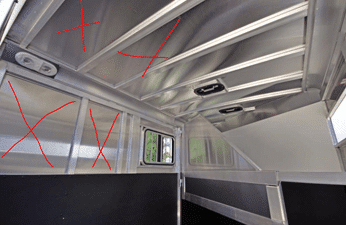
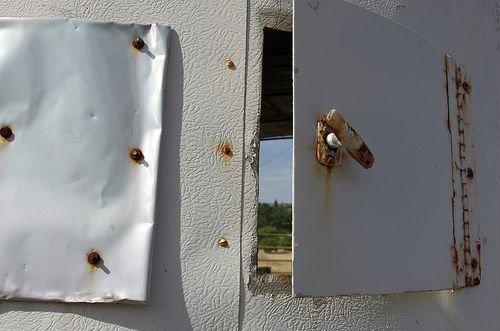
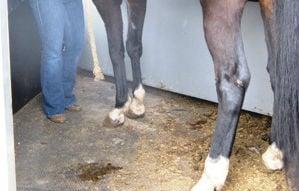
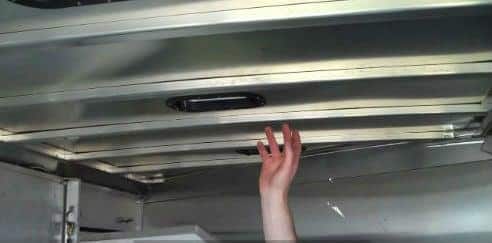
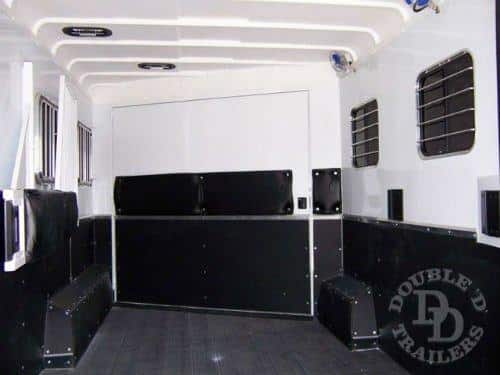
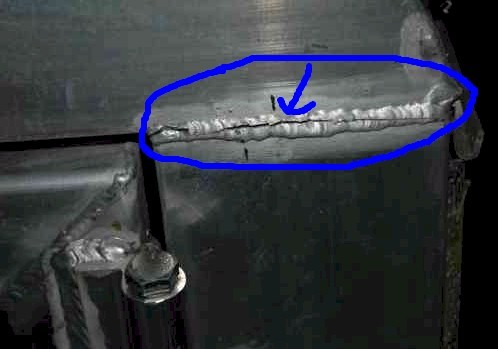 4. Aluminum Dividers are Weak at Welding Points
4. Aluminum Dividers are Weak at Welding Points
